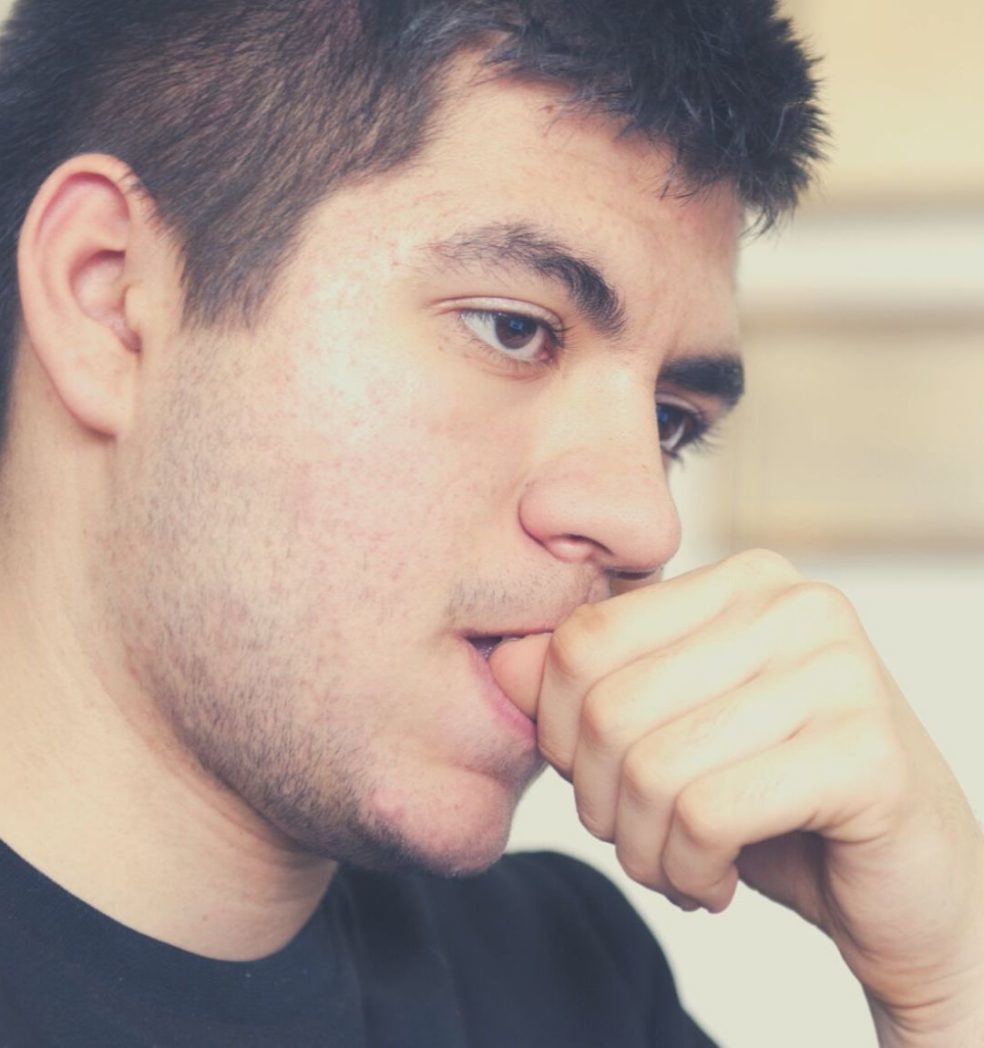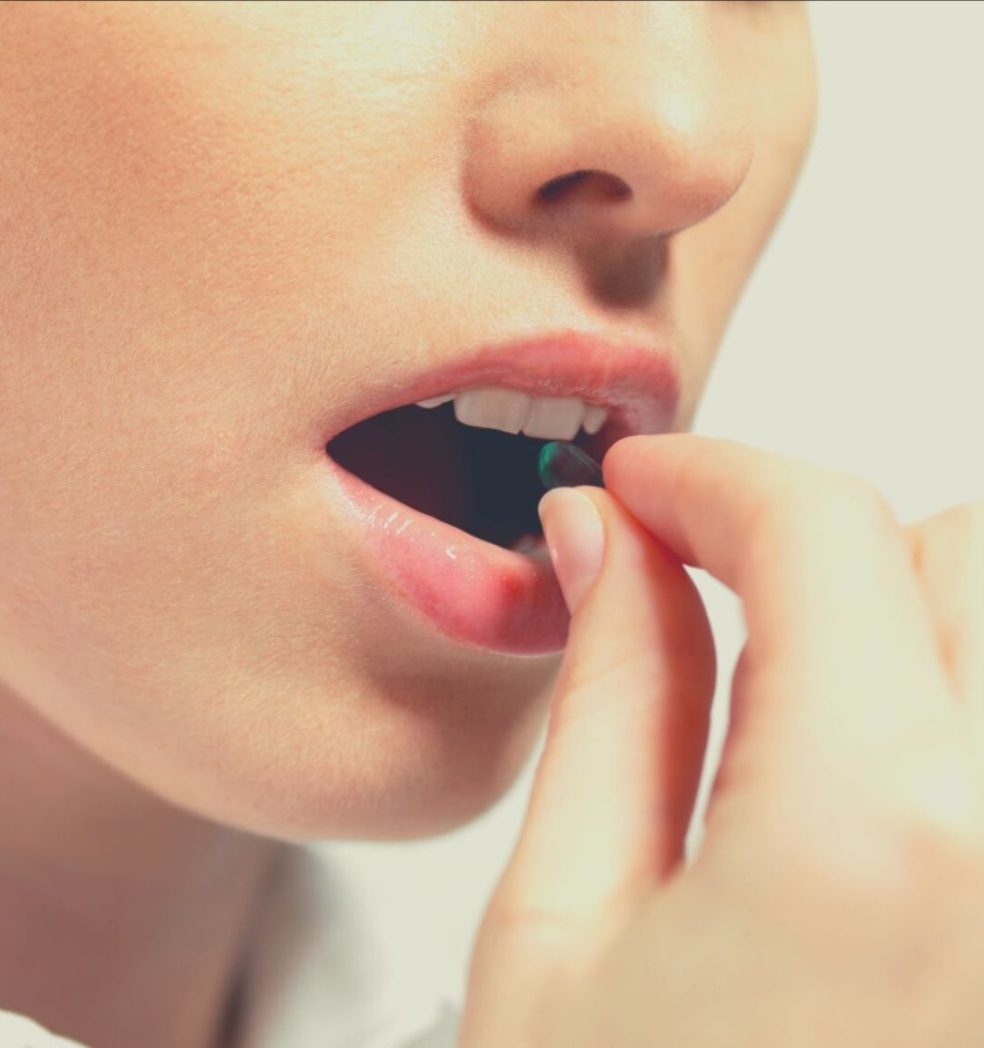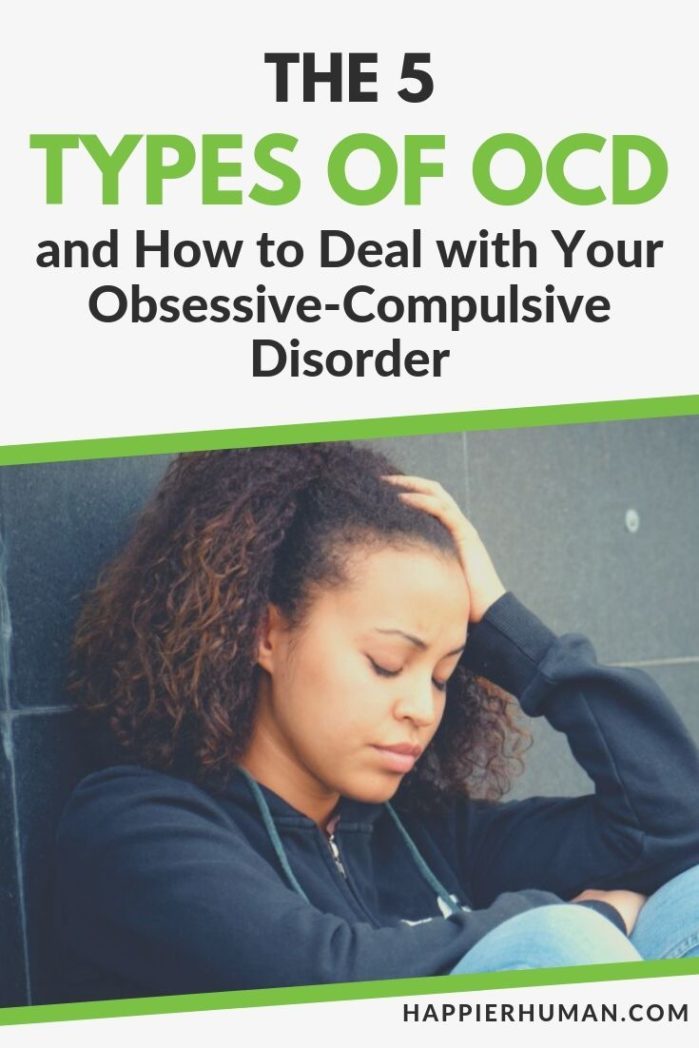Take a moment to think about your everyday life.
Do you check your door a couple of times after you lock it? Or perhaps you wake up in the middle of the night several times to check if all the windows in your apartment are firmly closed.
Do you find it impossible to part from that no longer have value? Or maybe you avoid throwing stuff away thinking you might need it someday.
Are you always preoccupied with a certain though that keeps repeating in your head regardless of much you try to distract yourself from it?
These are some of the telltale signs of OCD, a condition that affects roughly 2% of the U.S. population.
For those of us living with OCD, life becomes an endless stream of obsessive thoughts and compulsive behaviors fueled by an insatiable need for control.
But aside from that, many who struggle with this condition don’t even realize how much it affects their sense of happiness and well-being.
And that’s because it’s hard to get a clear picture when you’re inside the problem.
So, let’s begin by getting a better understanding of what OCD is, how it manifests, and what we can do to manage it.
What is OCD?
Obsessive-compulsive disorder is a condition characterized by intrusive and repetitive thoughts that generate anxiety.
To overcome these thoughts (obsessions) and escape the seemingly unbearable anxiety that accompanies them, people who suffer from OCD engage in all sorts of compulsive behaviors (also called rituals).
As soon as they perform these rituals, anxiety drops, and they begin to experience a sense of relief. The only problem is that as soon as those intrusive thoughts occur – and anxiety reaches alarming levels – they will engage in the same ritualistic behaviors (compulsions), thus reinforcing a vicious cycle.
Although OCD is a long-lasting disorder that impacts your overall quality of life in a profoundly negative manner, this condition is among the most misunderstood mental illnesses.
From the outside, OCD may seem like one endless stream of obsessive thoughts and compulsive behaviors. Most of us find it difficult to understand why people who struggle with this condition keep repeating this dysfunctional pattern.
What we need to realize is that obsessive-compulsive disorder is the result of numerous genetic, biological, and environmental factors. In other words, it’s hard to put a finger on the exact cause of this condition.
For example, genetics dictate that if you have a first-degree relative who’s been diagnosed with OCD, chances are you might develop the same problem. But this risk is closely linked to the environment in which you were born and raised.
And the most prominent environmental risk factor that can lead to OCD is physical and/or sexual abuse.
Lastly, when looking for an explanation, we must consider brain functioning and structure. For instance, studies indicate that people with OCD tend to have a hyperconnected prefrontal cortex.
Long story short, obsessive-compulsive disorder is a complex condition that experts have yet to understand fully. Fortunately, we can draw hope from the fact that it’s a relatively treatable disorder, and with the right intervention, people who struggle with it can find balance and peace of mind.
Common OCD Symptoms
In broad lines, there are two symptoms that indicate the presence of this condition: obsessive thoughts/images and compulsive behaviors. But let’s take a closer look at how these symptoms manifest.
Obsessions are intrusive and repetitive thoughts or images that generate anxiety and may appear as:
- Taboo thoughts related to religion, sex, and harm.
- Fear of disease, bacteria, germs, viruses, and contamination.
- The need for symmetry and order.
- A sense of immediate and unavoidable danger.
Compulsions are ritualistic behaviors that the person feels urged to perform to get rid of anxiety. Some examples include:
- Checking on things frequently and repeatedly.
- Excessive cleaning and washing.
- Arranging objects in a precise order.
- Repeating specific words, prayers, or ‘mantras.’
- Other ritualized behaviors.
But to determine if these symptoms indicate the presence of OCD, we need to consider the intensity and frequency of your obsessions and compulsions. In other words, there’s a difference between being clean and being obsessed with cleaning.
So, where do clinicians draw the line between obsessive thoughts and thoughts that occur with a specific frequency? And how do they separate compulsions from repetitive behaviors that serve a purpose?
How Is OCD Diagnosed?

The key to accurately diagnosing OCD is having a solid understanding of the term obsession and compulsion.
For mental health professionals, obsessions represent recurrent and persistent thoughts, images, or impulses that people experience as intrusive and inadequate. Furthermore, obsessive thinking will always generate intense anxiety.
Unlike rumination or worrying (which also involves playing the same adverse scenario repeatedly), obsessions have nothing to do with real-life issues.
To escape the unpleasant sensation associated with obsessive thoughts and images, people with OCD struggle to suppress or ignore them. Some might even try to neutralize them with other thoughts.
But even though OCD sufferers are fully aware that their intrusive thoughts and obsessive images are a product of their mind, they can’t stop thinking about them.
As for compulsions, experts define them as repetitive behaviors or mental acts which person feels compelled to carry out in response to an obsessive thought or image.
Compulsive behaviors are intended to reduce anxiety or prevent a particularly stressful event, but these behaviors or mental acts don’t neutralize the obsessions that generate stress. And that’s because the content of obsessive thoughts is almost always irrational and from real dangers.
Just as in the case of any other mental health condition, clinicians rely on two instruments to diagnose OCD: clinical interviews and psychological tests.
The clinical interview is a set of open-ended questions that mental health professionals use to gain valuable insights about a patient’s condition. One of the significant advantages of using a clinical interview is that it allows clinicians to adapt and personalize the diagnostic process for every case they encounter.
As for psychological testing, this science-backed approach to mental health diagnostics relies on various questionnaires and tests that are specifically designed to evaluate different aspects of personality and highlight potential problems.
Although psychological tests rely on a one-size-fits-all approach, they do provide an objective image of the patient/client’s overall condition.
Lastly, OCD can sometimes indicate the presence of other mental health disorders such as body dysmorphic disorder, hypochondria, hair-pulling disorder, skin-picking disorder, and even eating disorders.
Are OCD and Anxiety Linked? (And How Does That Relate to Happiness?)
In essence, anxiety represents the core of obsessive-compulsive disorder. As we learned earlier, the obsessive thoughts and images that OCD sufferers experience can generate a lot of stress and anxiety.
That’s why they feel an urge to engage in all sorts of compulsive actions and ritualistic behaviors in an attempt to escape anxiety.
But reducing the discomfort generated by obsessive thoughts or images will only strengthen the vicious cycle of OCD. At the same time, compulsive behaviors become, in turn, a source of stress and anxiety, because they require a great deal of time and are often regarded as difficult to control and dangerous.
But aside from the unpleasant anxiety associated with this condition, other complications may accompany OCD.
For example, studies suggest that OCD can often ‘team-up’ with depression, resulting in devastating consequences for your happiness, health, and well-being.
In other words, the degree of distress associated with obsessions and compulsions is one of the main reasons why people who struggle with this condition can sometimes experience depressive symptoms.
On top of that, current research indicates a significant association between OCD and suicidality. Although researchers have yet to determine the mechanism of suicidality in OCD, we can all imagine how difficult life can get when you’re continually dealing with obsessive thoughts and compulsive behaviors.
As with any other mental health condition, OCD has a profoundly negative impact on our overall sense of happiness and well-being. It’s hard to find joy and peace of mind when you spend hours washing, cleaning, checking, arranging, or obsessing about all sorts of irrational and unrealistic topics.

And where there’s no joy and satisfaction, depression can quickly become a serious problem that threatens your personal, social, and professional growth.
Long story short, obsessive-compulsive disorder is a severe condition that can prevent you from achieving lasting happiness. But just because you’re dealing with this problem doesn’t mean you should give up pursuing the life you wish to create for yourself.
Remember that no matter how unbearable your OCD might feel; you can always find a way to manage it as long as you’re willing to seek help and put in the effort to challenge your obsessive thoughts and keep your compulsive behaviors in check.
The 5 Types of OCD
Depending on the content of obsessive thoughts and images, there are five types of OCD, each with its own ‘theme’:
1. Contamination
This symptom subtype refers to people who experience intense anxiety and discomfort associated with the idea of contamination.
As a result, they spend hours each day washing their hands, disinfecting their desk, or cleaning their house, in a desperate attempt to eliminate any trace of ‘contamination’ that might trigger their obsessions.
Whether they’re afraid to touch certain objects (to avoid contamination) or stand too close to other people (to avoid contaminating them), “cleaners” tend to build their entire life around the obsession of cleanliness.
But aside from all those countless hours wasted on cleaning, disinfecting, rinsing, and scrubbing, there are other, more severe consequences that result from being a compulsive cleaner.
For example, there are cases when obsessive handwashing can damage the skin, causing blisters and open wounds.
2. Checking
Another frequent ritual that people with OCD exhibit is checking. This compulsive behavior stems from an intense fear of catastrophes.
In other words, “checkers” are always obsessed with the idea that something terrible is about to happen. As a result, they strive to prevent imaginary catastrophes by checking and rechecking doors, windows, kitchen appliances, and pretty much any object that they see as a potential hazard.
For example, a “checker” might open and close each window several times before leaving the house. Or, he/she might unplug all electronic devices to prevent a potential fire
As you can imagine, this behavior is both time- and energy-consuming, not to mention the fact that constant checking can drive others crazy as well.
Paradoxically, some people with OCD engage in compulsive checking to protect others from their own perceived carelessness, which they believe might result in a tragic disaster.
3. Ordering
Just like “checkers,” people who are obsessed with symmetry and keeping things in order (or “organizers”) waste countless hours on ritualistic behaviors.
But they’re not just obsessed with organizing every little aspect of their lives. When we look at their compulsive behaviors, we notice that “organizers” spend a lot of time arranging objects in a specific order or maintaining symmetry.
The core obsession of this subtype is “Everything must be right/perfect.” And since you can’t arrange everything in perfect order, you can imagine the distress they often experience knowing that certain objects (or aspects of their life) are beyond their control.
Sometimes, the ‘logic’ behind their obsessions can sound quite absurd. For example, “If I keep everything arranged in perfect order, my wife won’t break up with me.”
For “organizers,” symmetry and order are the fundamental aspects of their everyday life. The time and energy that goes into ‘arranging’ and ‘standardizing’ every aspect of their existence can come at a great cost.
4. Hoarding
How many of you hold on to objects that no longer serve a purpose?
While many of us tend to develop some form of attachment to objects, there’s a significant difference between ‘collecting’ stuff and pathological hoarding.
Hoarders are a subtype of OCD sufferers that place a high value on objects that are generally considered junk. The objects they find impossible to part from are usually clothes, books, old magazines, receipts, mail, and so on.

The main obsessive thoughts that prevent them from throwing away useless stuff is – “Maybe I’ll need it at some point” or “What if I throw away something important?”
Because they tend to consider themselves collectors, their work and living space are often full of clutter. As you can imagine, hoarders can be extremely difficult to live and work with. And that can sometimes translate to unemployment and solitude.
But compulsive hoarding isn’t always a symptom of OCD. Experts have recently included hoarding as a distinct diagnosis in the DSM-5 (Diagnostic and Statistical Manual of Mental Disorders).
5. Pure O
This atypical form of OCD manifests as unwanted thoughts related to religion, sexuality, and violence.
Known as purely obsessional OCD (or pure O), this subtype is different from other forms of OCD in the sense that patients rarely manifest compulsive behaviors.
But despite exhibiting little to no ritualistic behaviors, people with pure O engage in mental rituals to escape the discomfort generated by their intrusive and unwanted obsessions.
Since their obsessions can cause guilt, disgust, doubt, and even horror, people who suffer from purely obsessional OCD get caught up in an endless cycle of unwanted obsessions and mental rituals.
With no explanation for the undesirable and disturbing thoughts/images that are racing through their head, people with pure O spend an enormous amount of time trying to figure out the cause of their problem.
OCD vs. OCPD
We know for a fact that obsessive-compulsive disorder is a severe condition with profound implications for our emotional, social, economic well-being.
It’s hard to imagine living with the same overwhelming discomfort day after day. All that time and energy wasted on rituals meant to eliminate the anxiety we cause ourselves.
When you’re always preoccupied with putting everything in perfect order, checking each window ten times before leaving the house, happiness becomes a far-fetched dream.
Everything you’ve read so far was a detailed description OCD in its purest forms. In other words, we focused mainly on covering everything you need to know about this condition.
However, when we take this knowledge and apply it to the real world, we might notice that while some people fit perfectly with this diagnosis, others might only show a few signs of OCD but without experiencing intense symptoms.
And that’s when experts consider the possibility of a personality disorder.
Obsessive-compulsive personality disorder (OCPD) is a condition characterized by extreme perfectionism, rigid rules, and obsessions related to order and cleanliness.
People who struggle with this personality disorder are often described as pathological perfectionists with an inclination towards rigid rules and an overall tendency to behave in a profoundly inflexible manner.
These people often get lost in meaningless details and fail to see the big picture. As a result, they find it difficult to pursue a goal or focus on a specific activity for more extended periods.
Often, they are so obsessed with clarifying every possible detail of a project that they fail to see the project as a whole. Interestingly, despite manifesting high standards, people with OCPD are poor time managers.
Although they are constantly preoccupied with planning, individuals with obsessive-compulsive personality, frequently leave the most critical issues behind, thus becoming overwhelmed by deadlines.
For many of them, productivity and commitment to work are far more important than recreational activities. For example, they refuse to relax or go out with their friends to avoid wasting time. And even when they engage in recreational activities like board games, tennis, or paintball, they tend to become highly competitive.
That’s why people with OCPD have a high risk of developing burnout or depression.
But the most problematic aspect of this personality disorder is the mental rigidity that people who struggle with OCPD often display in almost every area of their life.

They adhere strictly to self-imposed rules and expect others to do the same. As you can imagine, this creates friction within their interpersonal relationships.
If all their plans and rules run smoothly, people with OCPD don’t experience the downsides of this personality disorder. But that’s rarely the case.
In real life, having full control over every aspect of your life is impossible, which is why each unpredictable situation that life throws down their path generates a lot of distress and tension.
In a way, we could argue that obsessive-compulsive personality disorder is a relatively ‘milder’ but more lasting form of OCD. Unfortunately, OCPD is also harder to treat as human personality is a relatively stable construct.
But just because you’re dealing with OCPD doesn’t mean you can’t achieve a happy and fulfilling life. As long as you’re willing to work on this issue, happiness can be within reach.
Can OCD Be Cured?
This is one of those questions that often sparks intense debates among researchers and mental health professionals. But since we’re neither researchers nor healthcare professionals, the real question we need to ask ourselves is what do we mean by ‘cured’?
Although we might find it challenging to accept, keeping OCD in check involves a lifetime effort. Just because you consistently challenge your obsessions doesn’t mean there won’t be times when you feel overwhelmed by intrusive, uncontrollable thoughts.
And that’s perfectly ok! What matters most is your motivation and willingness to challenge your obsessive thinking and built the resilience you need to withstand the urge to engage in compulsive behaviors.
As with many anxiety disorders, OCD is a condition that requires consistent effort on your part. In other words, if you wish to keep your obsessions and compulsive behaviors in check, you need to implement some lifestyle changes for the rest of your life.
At the end, who says that a happy life should be a comfortable life!?
As with other disorders, the fact that a person has been diagnosed with OCD or OCPD should not change the way others interact with him/her.
Let’s not forget that we’re dealing with human beings who might already have a hard time adjusting and labeling or explaining all their behaviors from the perspective of their diagnosis can only do more harm than good.
In short, treat people as normal, and they will behave normally.
Treatments for OCD
1. Psychotherapy
Psychotherapy is one of the most common treatments for OCD. With the help of a trained professional, you can explore the origin of your condition and learn new coping strategies that will help you keep obsessive thoughts in check.
Current scientific evidence suggests that cognitive-behavioral therapy (CBT) is a well-supported treatment for OCD.
When it comes to helping patients manage obsessive thoughts and compulsive behaviors, CBT practitioners often resort to exposure and response prevention (ERP).
In other words, patients are encouraged to expose themselves to images, objects, situations, or thoughts that generate anxiety. Once their obsessions ‘go off,’ they must refrain from any compulsive behaviors that would lower their anxiety.
By repeating this exercise – under the guidance of a therapist – patients realize that anxiety doesn’t last forever, so there’s no point in giving course to their compulsive behaviors.
Furthermore, the digital advancements of the 21st century have enabled mental health professionals to develop computer-based strategies for dealing with obsessive-compulsive disorder and other mental health conditions.
And the best part is that the science behind these cutting-edge approaches to mental health looks promising as researchers have confirmed that computer-based cognitive behavioral therapy is a valid, accessible, and cost-effective alternative to first-line interventions.
2. Medication
Since OCD can be the result of chemical and neurological imbalances in the brain, healthcare professionals often resort to medication, especially when the patient is dealing with a severe form of obsessive-compulsive disorder.

But when it comes to pharmacological therapy for OCD, finding the right combination of drugs is no easy task. In fact, the process of finding the proper treatment for each case is often based on trial and error.
In other words, psychiatrists often experiment with different drugs (in different doses) until they find the ideal combination. This means that during the first weeks of treatment, patients might experience a whole array of unpleasant side effects.
In general, there are two types of drugs that psychiatrists prescribe to patients with OCD.
The first category is SSRI’s (selective serotonin reuptake inhibitors), a class of drugs that psychiatrists prescribe for anxiety disorders and major depressive disorder.
The second class of drugs is represented by anxiolytics, which, despite having a significantly positive effect for patients with OCD, are highly addictive.
But regardless of the class of drugs recommended by psychiatrists, patients with OCD should be kept on medication for approximately one year before attempting a gradual reduction in dosage.
Even though medication might not be the perfect treatment option, experts agree pharmacological therapy is among the best approaches to severe OCD we have so far. In fact, most mental health professionals believe a mix of therapy and medication gives you the best possible chances to overcome this condition.
3. Deep Brain Stimulation
Deep brain stimulation (DBS) is a revolutionary procedure that involves placing a device called a neurostimulator. Through implanted electrodes that go deep into the brain, this device stimulates specific areas of the brain.
Initially, this procedure was designed for conditions like essential tremor and Parkinson’s disease. However, experts have recently discovered that DBS could be used to treat other psychological conditions as well.
According to a 2015 meta-analysis, deep brain stimulation is a valid alternative to therapy for patients who struggle with severe forms of OCD.
Although deep brain stimulation might sound like an effortless solution for obsessive-compulsive disorder, the success of this procedure depends on certain factors such as:
- A thorough medical and psychological evaluation based on which doctors can determine if the procedure will generate positive results;
- In-Depth knowledge of the brain regions responsible for the patient’s condition;
- Substantial expertise that allows the medical team to perform this intervention as safely and effectively as possible.
If you’re dealing with severe OCD and wish to resort to this option, keep in mind that experts view deep brain stimulation as a last resort for patients who don’t respond well to ‘traditional’ treatments such as medication and therapy.
5 Tips on How to Manage Obsessive Thoughts and Compulsions
1. Challenge your intrusive thoughts
The first step in managing OCD is self-awareness. That means taking the time to explore the irrational nature of your obsessions and figuring out a way to challenge them.
You can start by writing down your obsessive thoughts and see if any patterns emerge. Remember that each subtype of OCD has a specific theme, and that’s what you need to focus on.
When it comes to challenging and disputing your obsessive thoughts/images, there are three strategies you can use:
- Empirical disputing – Is there any empirical proof to support my obsessive thoughts/images?
- Logical disputing – Is there any logic behind my obsessive thoughts/images?
- Pragmatic disputing – Are my obsessive thoughts/images helpful in any way?
No matter how valid and accurate your obsessions might appear – given that they generate a lot of anxiety – always make an effort to challenge them.
2. Let go of control
One of the main reasons why people with OCD find it challenging to manage their condition is the insatiable need for control.
If we look at the content of their obsessive thoughts/images, most of it has something to do with control. Whether they’re obsessed with washing their hands – to prevent contamination – or checking their kitchen appliances constantly – to prevent a catastrophe – people with OCD find it challenging to accept the uncontrollable.
Although the need for control is a fundamental human need which can help us be more organized and responsible, too much of it can become invasive and affect our personal and social life.
If you feel like you tend to exercise too much control over your life – especially over aspects of your life that are partially controllable or uncontrollable – perhaps it’s time to start observing the irrational thoughts that run through your head when you feel like you don’t have control over the situation and replace them with functional ones.
For example, instead of saying, “If I wash my hands constantly, I won’t get sick and die.” You could say, “No matter what I do, I can never have full control over my health.”
You can also try different meditation and relaxation techniques that can help you tolerate discomfort and stress better.
The sooner you let go of control and accept the uncontrollable, the easier it is to get a handle on your compulsive behaviors.
3. Postpone your ‘rituals’ as much as possible

Ask any mental health experts, and he/she will tell you that the best strategy for managing OCD is exposure and response prevention (ERP).
As you already know, ERP is a strategy designed to help OCD sufferers control their compulsive behaviors.
By postponing your ‘rituals,’ you learn to cope with the anxiety generated by your intrusive thoughts without resorting to repetitive and meaningless actions that waste your time and energy.
But keeping compulsive behaviors under control is easier said than done, especially when you’re dealing with high levels of anxiety. However, that doesn’t mean you shouldn’t try.
Building resilience to frustration and anxiety is like training a muscle; repetition is the key.
Start by postponing your compulsive rituals for one or two minutes then gradually increase the duration between obsession and compulsion.
Practice until you can tolerate the anxiety associated with your obsessive thoughts without resorting to compulsive actions.
4. Consult a professional
Since OCD is a severe mental health condition, make sure to consult a professional as soon as you feel like your obsessive thoughts, and compulsive behaviors have gotten out of hand.
Unfortunately, most of us seek help when the condition has already become a serious problem. In fact, many OCD sufferers are sent to therapy by their friends, family members, or life partners as they are the first to notice the negative consequences of OCD.
As in the case of most mental health conditions, it’s hard to see the problem when you’re in it. And that’s why it’s essential to have a robust social network of people who love and care about you; people who can offer an outside perspective and help you understand how this problem impacts your life.
To determine the best course of action, mental health professionals start by examining your overall condition. With the help of clinical interviews and other diagnostic tools, a psychiatrist or psychologist can zero in on the cause of your problem and suggest potential treatment options.
From there on out, you will have to gradually implement new habits that will allow you to exercise better control over your obsessions and compulsions.
5. ‘Open up’ to your close ones
They say admitting you have a problem is the first step towards recovery.
People with OCD are well aware that their compulsive rituals are often labeled ‘weird’ or ‘stupid’ by other people.
On top of that, they rarely share the exact reasons why they engage in compulsive behaviors as they’re afraid others might consider them crazy.
And let’s not forget about the stigma surrounding mental illness.
The point is, those struggles with OCD tend to be somewhat secretive when it comes to their condition.
As a society, the best thing we can do is create a safe and welcoming environment where people with OCD and other mental health conditions can talk about their issues and ask for help without feeling criticized and ashamed.
As an individual, the best thing you can do is talk to your close ones about this problem. That way, chances are they’ll show more compassion and understanding towards your difficulties.
Final Thoughts on the Types of OCD
As we mentioned at the beginning of this article, according to a 2009 report by the World Health Organization, OCD affects approximately 2% of the U.S. population.
In fact, this condition ranks ten on the list of physical and mental diseases that cause disability.
For people with OCD, keeping a stable job, cultivating a lasting relationship, or investing in healthy social interactions often proves challenging. And that can lead to a significant drop in happiness and well-being.
Overcoming the vicious cycle of OCD takes a lot of patience and practice. That’s why many who suffer from this condition need professional help.
If you have a friend, coworker, family member or life partner who’s dealing with OCD, make an effort to put yourself in his/her shoes to gain a better sense of the difficulties associated with this condition.
All and all, the pursuit of happiness takes a lot of effort, and for those of us dealing with OCD, this effort involves challenging your obsessive thoughts and managing your compulsive rituals.
Finally, if you're looking for more resources on OCD, check out these articles:
- 7 Obsessive-Compulsive Disorder (OCD) Tests to Try
- Relationship OCD: Symptoms, Causes, and How to Treat
- 118 Affirmations for Preventing Intrusive Thoughts


Alexander Draghici is a licensed Clinical Psychologist, CBT practitioner, and content writer for various mental health websites. His work focuses mainly on strategies designed to help people manage and prevent two of the most common emotional problems – anxiety and depression.

